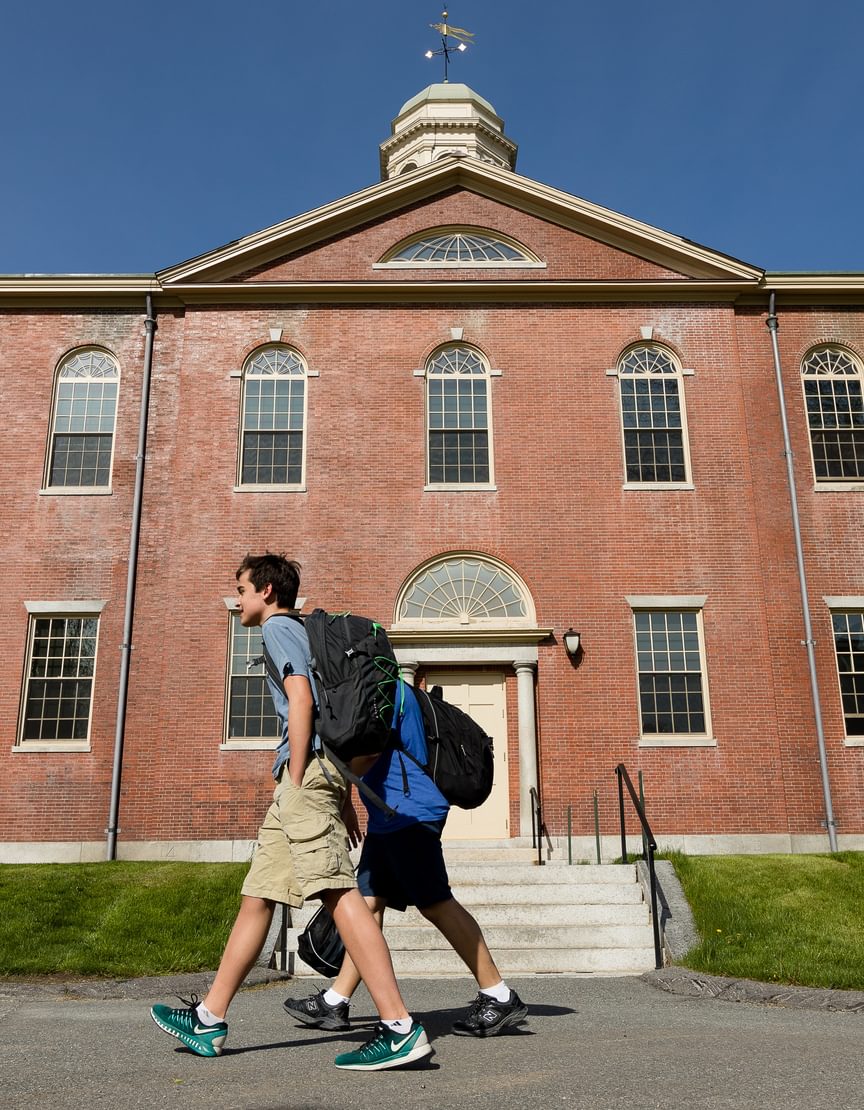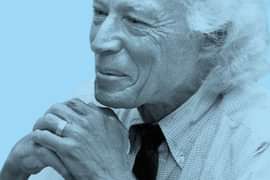
April 09, 2020
For learning's sake
Andover faculty examine grading and assessmentby Julie Halpert
Ianna Ramdhany Correa ’20 selected Andover because she was eager to be challenged academically and felt the schools in her New York neighborhood were not adequately fueling her passion for education. The 17-year-old senior is pleased with the quality of education she’s received at PA, but there’s something she wishes wasn’t part of the experience.
“I always find myself worrying about my grade and how to get it higher. In that process, you lose the excitement for learning,” Correa says. Now serving her third year on the student-run Policy Committee, a group that is part of Student Council and that proposes specific policy changes to faculty and students, Correa says the issue of grades has repeatedly surfaced as an area of concern.
Faculty are taking those concerns seriously. Eager to explore the most innovative ways to encourage student learning, the school has recently launched a review of its assessment process. Rajesh Mundra, dean of studies and a biology instructor, is cochair of the new Working Group on Assessment and Grading, formed last fall and composed of 13 teachers. Its charge: to examine grading and assessment and make recommendations for the future.
Doing Their Homework
For years, faculty have expressed concerns about grade inflation and the potential inequities for students who come from less advantaged backgrounds. In addition to questions raised by the student Policy Committee, grading also surfaced as a top issue in a spring 2018 faculty survey.
“Faculty felt this was an important topic to dive into,” Mundra says, noting that the review also responds to Andover’s 2014 Strategic Plan, which specifies that the Academy “nurture the academic and personal growth of all students as they navigate a complex, intentionally diverse learning community.”
Clyfe Beckwith, Andover’s assistant head of school for teaching and learning, a physics instructor, and parent of two Andover graduates, says the system merits closer review. “We’re exploring what tools to put in place to make students deeper learners.”
The effort kicked off this academic year with a visit from Joe Feldman, CEO of Crescendo Education Group, which partners with schools and nonprofits to implement alternative grading practices that are intended to be more equitable, accurate, bias-resistant, and intrinsically motivating. Feldman’s work and conversation helped the working group to frame their next steps, which includes the creation of three research units. One group is exploring new research on cognitive development and other aspects of adolescent learning, another is surveying current Andover practices in grading and assessment to better understand the purpose of grades and the motivations behind them, and the third is looking outside Andover to explore learning environments and assessment strategies designed by other institutions.
“The goal is to find a system that is equitable in terms of student learning, student opportunity, and student outcomes,” Mundra says, adding, “We’re critically looking at ourselves and wanting to become better.”

An Outdated System?
The A through F grading system used by most U.S. schools was developed in an era when only a small number of students attended classes. Grades were initially intended as a useful tool for instruction; they evolved into a means of facilitating movement and coordination of students across schools and school districts and as a way to communicate with school administrators and families, according to the article, “Making the Grade: a History of the A–F Marking Scheme,” by Ethan Hutt, assistant professor in the School of Education at the University of North Carolina at Chapel Hill and Jack Schneider, assistant professor of education at the University of Massachusetts, Lowell.
By the 1920s, when school became mandatory and the number of enrolled students grew exponentially, a standardized grading system became necessary. Andover, like most schools, used this 1 to 100 grading system until 1968, when a new 0 to 6 scale was introduced.
Andover’s faculty accepted a proposal to move to a 0 to 6 scale during a meeting held over the 1968 winter recess. According to a January 10, 1968, article in The Phillipian, the chair of the Steering Committee, Simeon Hyde, stated the changes were proposed “with the intention of reducing radically the ‘atmosphere of competition’ at Andover” and to adopt a simpler scale for grades.
But the traditional grading system—as well as Andover’s simplified structure—has come under criticism in recent years for creating an arrangement of external rewards that has the potential to sacrifice deeper learning.
Beckwith has seen the consequences. “When I return a test, the first thing the students do is look at the number. And if they don’t like it, they don’t look at the feedback,” he says. As a parent, Beckwith also has seen the focus on grades stifle confidence. While the education his children received at Andover was “phenomenal,” he says “there’s an incredibly high focus on grades here, which contributes to a lot of stress. When students get lower grades than their peers, they feel like they’re not as smart or confident and don’t put as much effort into creative pursuits. They’re just trying to get a better grade instead of pursuing learning for learning’s sake.”
Mundra, also the parent of an Andover student, worries that the current grading system also doesn’t fully account for the different backgrounds of Andover’s diverse student population and can end up penalizing those who come from a lower-income household and/or a less-resourced educational institution.
Correa says she has felt this distinction profoundly as the daughter of immigrants; her mother is from Cuba and her father is from Guyana. Growing up in a lower socioeconomic household in Queens, New York, Correa attended schools with far fewer resources than Andover. During her first year at PA, Correa struggled in her Bio100 class and received a lower-than-expected grade. “I was scared,” she says. “It was my first encounter with my own self-doubt and my ability to succeed at school.”
Students from higher socioeconomic backgrounds generally have a leg up on academic skills given their access to more and better resources at home and at school. A different grading system could be one way to help level the playing field.
Expanded Assessment
One alternative that Andover is evaluating is called proficiency-based grading. Feldman, who also is a former teacher and principal, authored the 2018 book Grading for Equity in which he argues that many common grading practices are outdated and yield inaccurate information about student achievement. Students may have earned an “A” not because they’ve mastered the course content, but because they’ve earned enough points by completing a variety of required tasks.
Feldman and others have proposed a number of alternatives to traditional grading practices intended to change this dynamic. Feldman suggests a better structure would be to have the teacher and student work together to meet goals—more like coaching. He endorses a 0 to 4 scale instead of 0 to 100, as well as multiple opportunities for students to re-do work until it’s mastered. He also advocates against teachers including homework performance or class participation in the grade, arguing that both factors don’t reflect a student’s mastery of the material. Proficiency-based grading has worked in other schools and Feldman believes the approach would be ideal for Andover.

A Tang Institute Fellow and math instructor, Heidi Wall ’94 is currently piloting a new approach after feeling that her own teaching philosophy was at odds with traditional grading practices. The typical model doesn’t necessarily reflect mastery or growth, she says, and Wall was uncomfortable giving a grade without allowing students to explore what they had not mastered.
Wall is using alternative modes of assessment with her classes this academic year. These modes include reflection tools that help students better understand their role in preparing for learning, and questions about preparation habits, problem solving, and communication.
Wall says these methods nudge students to remove distractions and to take actions, such as prioritizing sleep and noticing how that affects their learning. After taking a test, students receive feedback and corrections—but not a cumulative score. Wall instead provides a detailed rubric that lays out levels of mastery and what is needed for mastery to be achieved. Though students still receive a 0 to 6 in each section, there’s no overall score; final grades will ultimately reflect where they are on a scale of mastery. Students also have the option of taking a separate test focused just on the concepts they have yet to master.
Wall says the system has worked well thus far. She has documented positive responses from students discussing how this approach has allowed them to focus more on the learning process instead of the grades, and she expects to continue using this type of assessment. “I feel much more confident about the grades reflecting what my students know.”

Some schools have migrated away from the use of grades entirely. The Francis W. Parker Charter Essential School in Devens, Mass., is one of a coalition of schools founded on the principles of Ted Sizer, former Andover head of school and a notable figure in American education. Since opening in 1995, the school has never used letter grades, emphasizing instead student reflection and identifying and learning from mistakes, with revisions built into the system.
“The metaphor is that kids are climbing a mountain and the continuum lets them know how close they are to the summit,” says Deb Merriam, academic dean at the Parker School. Instead of grades averaged to a GPA, Parker School provides colleges with a two-page narrative report that documents each student’s journey. Merriam says this approach has significantly reduced students’ anxiety—without compromising their success.
Mia Lepardo, a Parker School student, initially started ninth grade at a large public school. “It was all about who could get the best grade and who could do better in school. It was all about competition. It wasn’t about learning,” she says. Within a few weeks after transferring to Parker, Lepardo felt the stress melt away. She’s now engaged in a senior project she developed to create jewelry connected to the environment, which required two months of in-depth research. “People tend to think my school is easier than a public school. I think it’s harder, but just less stressful.”
The All-Important High School Transcript
Those in higher education are divided on their opinion of alternative assessments. Some, like David Hawkins, executive director for educational content and policy for theNational Association for College Admission Counseling (NACAC), welcome the change.
The fact is that we have a simplistic system that is a lagging artifact of a much earlier era. NACAC sees great potential in alternative assessments in breaking some of that stagnation in favor of more open and inclusive approaches to student strengths and abilities.
”In fact, NACAC is working with the Learning Policy Institute on an initiative called “Reexamining College Access,” which is looking at alternative assessments and developing a set of accepted norms.
But Hutt, assistant professor at UNC Chapel Hill, says it’s challenging to implement such a dramatic change and that attempts throughout the years have generally failed. “The long-accepted standardized grades that colleges recognize and know, that power repels a lot of the reform efforts to get rid of them,” he says. He argues that new assessment models could introduce even more subjectivity into the process and leave colleges confused by how to use them.
Hawkins agrees that there needs to be a commonly understood rubric for assessing students and a shorthand that all stakeholders can understand. “There are 20,000-plus high schools in this country. It has the potential to get very messy.”
Concerns about myriad assessments have led to an effort to create a more uniform system. One example is the Mastery Transcript Consortium, which developed a new high school transcript form that was sent out by member schools for the first time last year for fall 2020 admission.
No Easy Changes
Feldman acknowledges that this type of widespread change can’t happen overnight; it needs to be rolled out with a long-term investment in time and resources with parents and teachers deeply involved. “If the gradations of the levels of mastery are not explicitly described or if there isn’t investment in calibration across teachers, you’ll have each teacher interpreting students’ performances differently and will be more likely to perpetuate the same inequities that our traditional grading practices have,” he says.
Hutt argues that it’s possible for educators to work within the current system while finding a way to keep students focused on learning, for example by allowing for more ungraded assignments and rewrites. “The GPA is the single best predictor of how a student will do in college,” he says. Still, he acknowledges that Andover would be well positioned to pioneer a radical change if the school chooses to do so.
“Andover could really innovate in this space, since no one will doubt the quality of what they’re doing.”
Mundra and Beckwith acknowledge that any potential changes will take time to consider, adopt, and be successfully implemented. There’s a healthy level of skepticism about new approaches, with no preconceived notions of the outcome. Whatever is decided won’t change the core of an Andover education, and further, Mundra expects the review will make Andover a stronger school.
“We will do our research and build on the firm foundation of our values, and we’re going to get better when we do.”
Julie Halpert is a freelance journalist based in Michigan. She has more than three decades of experience writing for numerous national publications, including the New York Times, The Atlantic, and the Wall Street Journal. She covers topics including parenting, health, education, science, and the environment.





